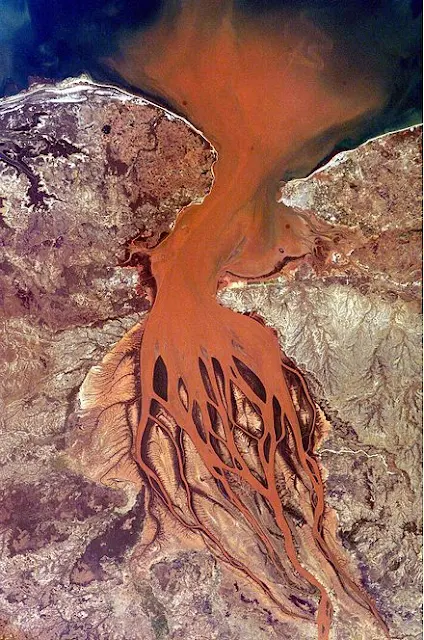Bombetoka Bay is a bay on the northwestern coast of Madagascar near the city of Mahajanga, where the Betsiboka River empties into the Mozambique Channel. Numerous islands and sandbars have been formed in the estuary from the large amount of sediment carried by the Betsiboka River and have been shaped by the flow of the river and the push and pull of the tides.
 |
| Bombetoka Bay |
Along the coasts and on the islands, the vegetation is predominantly mangrove. In fact, Bombetoka Bay is home to some of the largest mangrove communities in Madagascar, providing shelter for diverse communities of mollusks and crustaceans, as well as a habitat for sea turtles, birds, and dugongs. Along the northwestern coast of Madagascar, mangroves and coral reefs associate to create dynamic and diverse coastal ecosystems. Mangrove forests capture river sediments that would smother coastal reefs, while reefs protect mangroves from the fort.swell.
Near the water, the cultivation of shrimp and rice is common, while the plantations of coffee abound in the surrounding terrain.
Sediment transport and suspension in Bombetoka Bay has changed significantly over the past 30 years, with a dramatic increase in the amount of sediment moved by the Betsiboka River and deposited in the estuary and offshore delta lobes. These changes have negatively affected agriculture, fishing and transportation in one of the largest ports in Madagascar.